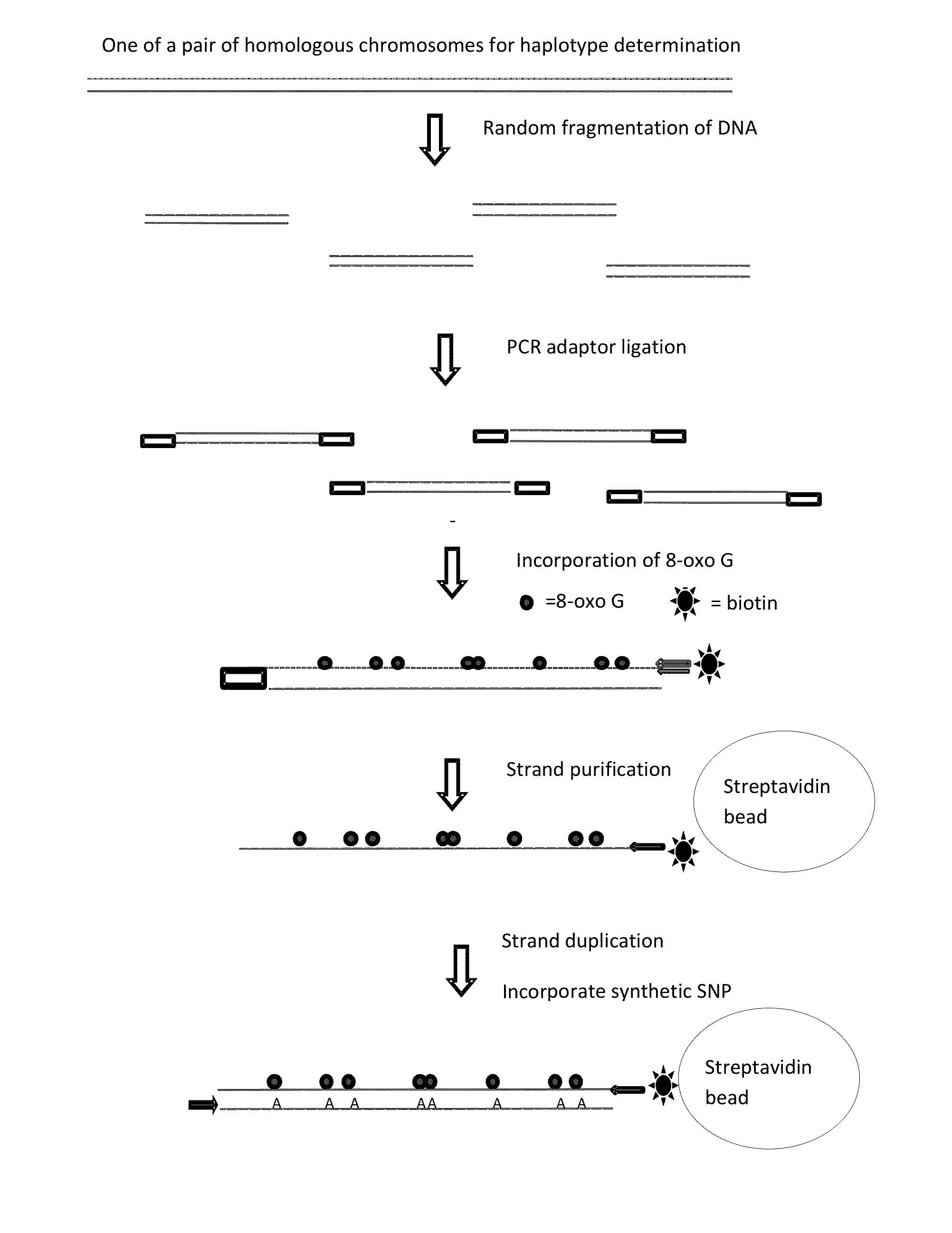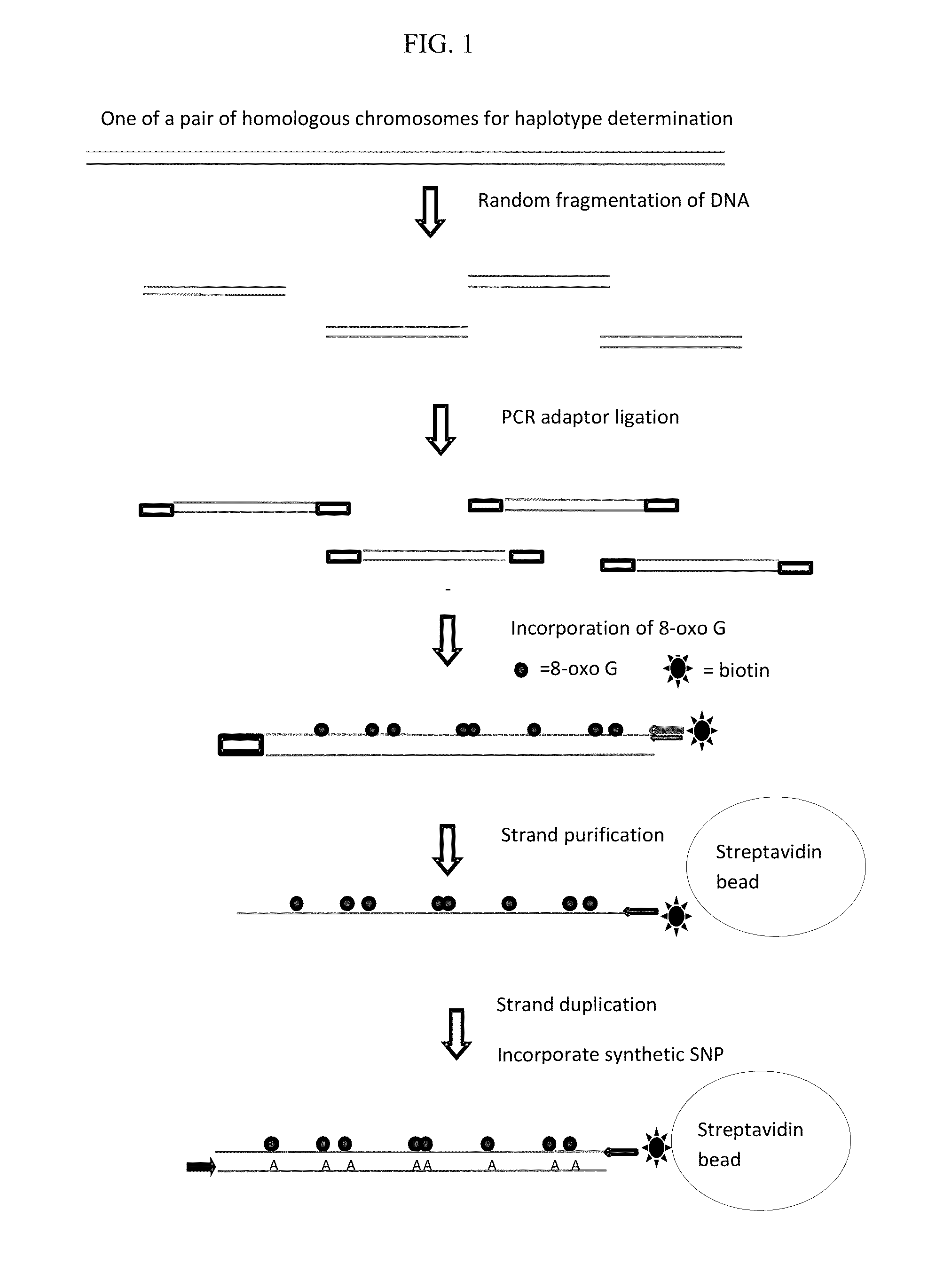Methods and systems for determining haplotypes and phasing of haplotypes
- Summary
- Abstract
- Description
- Claims
- Application Information
AI Technical Summary
Benefits of technology
Problems solved by technology
Method used
Image
Examples
example 1
Synthetic Polymorphism Incorporation into phiX Genome
[0081]Sequencing experiments were performed to assess the frequency of incorporation of modified nucleotides into a DNA strand for downstream sequencing. A bacteriophage reference genome, phi X 174 or phiX was used as phiX has a small, well defined genomic sequence of 5386 bases. The two modified nucleosides, 8OxodGTP and dPTP, were incorporated in different combinations with normal dNTPs. dPTP can base-pair to both A and G whereas 8OxoG can base pair to both A and C.
[0082]A standard paired end Illumina flow cell was seeded with a standard phiX library at a concentration of 2 pM following manufacturer's protocols. Following hybridization of the library to the flowcell bound oligonucleotides, DNA molecules were copied in the flowcell lanes using the first strand extension method by incubating the flow cell at 40° C. for 1 hour in the presence of a DNA polymerase and various nucleotide mixes (natural and unnatural) as found in Table...
example 2
Synthetic Nucleotide Incorporation into p53 Gene
[0090]A region of the p53 gene was further sequenced using PTP modified nucleotide inserted into the gene prior to sequencing. A region of the p53 gene was amplified using oligonucleotides TP53 Exon1 3.1F (Tail-GAAACTTTCCACTTGATAAGAGGTC) and TP53 Exon 4 8.1R (Tail-GCCCCTGTCATCTTCTGTCC). The PCR mix consisted of 1× Thermopol buffer, 26 U / ml of Taq DNA polymerase, 0.52 μM of each oligonucleotide. Reaction 1 contained 200 μM of each natural nucleotide (dATP, dCTP, dGTP, dTTP). Reaction 2 contained approximately 200 uM of dATP and dGTP, 198 μM of dCTP and dTTP and 2 μM of dPTP. Reaction 3 contained approximately 200 μM of dATP and dGTP, 180 μM of dCTP and dTTP and 20 μM of dPTP. Amplification was carried out using the following conditions: 94° C. for 3 minutes followed by 38 cycles of 94° C. for 30 seconds, 50° C. for 30 seconds, 72° C. for 5 minutes. After cycling, samples were incubated at 72° C. for 5 minutes and the temperature was low...
PUM
| Property | Measurement | Unit |
|---|---|---|
| Length | aaaaa | aaaaa |
| Phase | aaaaa | aaaaa |
| Fluorescence | aaaaa | aaaaa |
Abstract
Description
Claims
Application Information
 Login to View More
Login to View More - R&D
- Intellectual Property
- Life Sciences
- Materials
- Tech Scout
- Unparalleled Data Quality
- Higher Quality Content
- 60% Fewer Hallucinations
Browse by: Latest US Patents, China's latest patents, Technical Efficacy Thesaurus, Application Domain, Technology Topic, Popular Technical Reports.
© 2025 PatSnap. All rights reserved.Legal|Privacy policy|Modern Slavery Act Transparency Statement|Sitemap|About US| Contact US: help@patsnap.com



